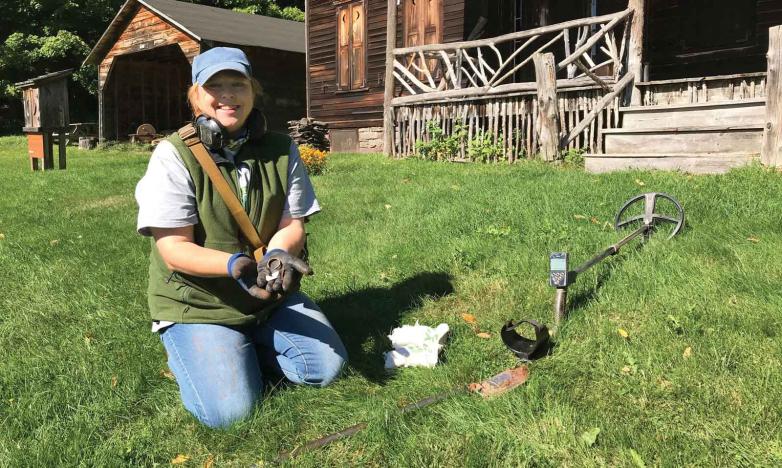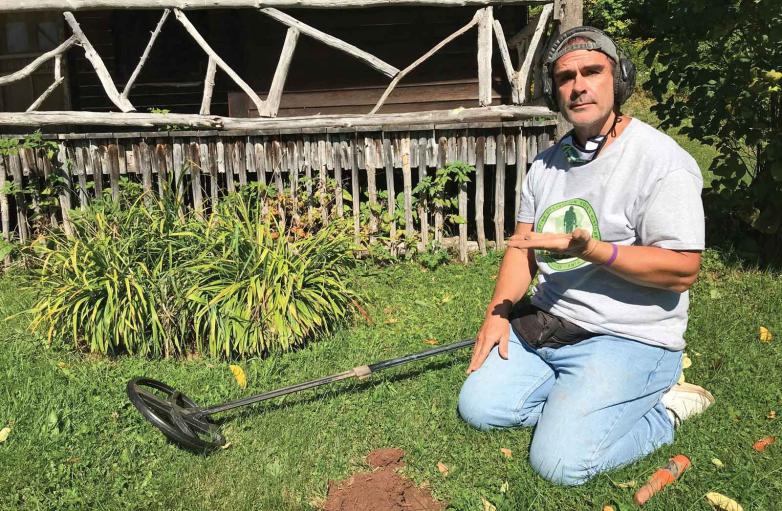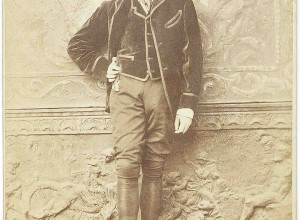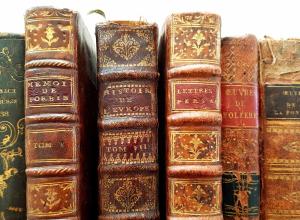In addition to spoons (two were found, both monogrammed), the Diggers mined a crotal, or “jingle bell”; several Mercury dimes; buckles; latches; buttons; and a small brass finial. Then, in the apple orchard across the road, they found a tiny shard of silver, ornamented with a cherub and engraved with the words, “Dr. Barrus.”
Dr. Clara Barrus was Burroughs’ companion, secretary, nurse, and official biographer. She accompanied him on what would be his final journey on an eastbound train from California, when he uttered his final words into her ear: “How far are we from home?” Barrus continued living at the Woodchuck Lodge after his death, attending to her role as his literary executor. She also penned several books of her own, including Our Friend John Burroughs (1914), John Burroughs: Boy and Man (1920), and the two-volume Life and Letters of John Burroughs (1925).
The detectorists’ discoveries at Woodchuck Lodge are detailed in Chris Altmann’s new book, From the Ground Up 2: More Artifacts and Adventures, featuring lavishly illustrated stories of relics excavated in the US and England, a favorite vacation spot for hobbyists like the Altmanns. Curios plucked from English soil are subject to inspection before they can be exported, and museums get first dibs. If an object is considered culturally or historically significant, a fair market value is assigned and paid.
The Delaware County Diggers aren’t in it for the money, though, even when called upon for more mundane searches. “People call us to find rings, property stakes, septic tanks sometimes,” Altmann recounted with a laugh. “And if we happen to find a ring with an inscription in it, we’re always trying to track that down.” For historical organizations, everything the Diggers find is cleaned, described, and presented back to the organization, free of charge.
Watching the detectorists at work, it’s clear the joy is in the hunt—in discovering and researching the historical bits and pieces just under our feet.

















